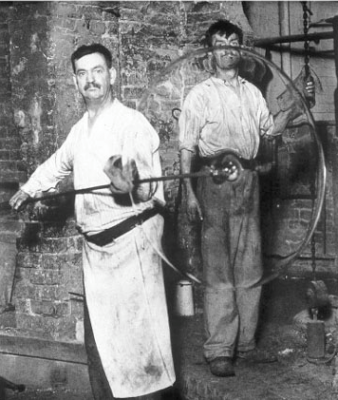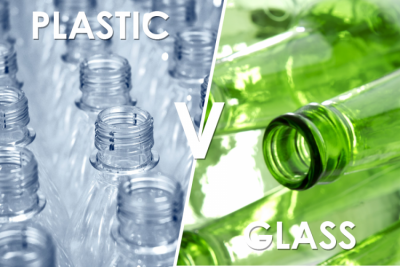
Five thousand years ago, on some beach in the Middle East, someone probably lit a fire and later found shiny, transparent globules like jewels among the sand. How were these new curiosities transformed into one of the major household and building materials of the 20th century – glass?
The raw material from which glass is made is silica, the most abundant of all the earth’s minerals. Milky white in colour, it is found in many forms of rock, including granite. And as every beach in the world has been formed by water pounding rocks into tiny particles, sand is the major source of silica.
The next time you are at the beach, examine a handful of sand. Any grain which is semitransparent – rather than black, red, yellow or some other definite colour – is a grain of silica. Sand also contains other minerals, but silica is the main component because it is hard, insoluble and does not decompose, so it outlasts the others.
Pure silica has such a high melting point that no ordinary fire would convert it into glass. So the first Middle Eastern glass-makers must have lit their fire on sand which was impregnated with soda (compounds of sodium) left behind by evaporated water from a lake or ea. The soda reduces silica’s melting point.
Today, lime and soda are combined with silica to produce soda-lime glass, used for making bottles, window panes and cheap drinking glasses. When glass cools, its structure does not return to the crystalline structure of silica, which is opaque. Instead, it forms a disordered structure rather like a frozen liquid, which is transparent.
Ovenware and lead crystal
Other materials may be added to provide colour, or to improve the quality of the finished glass. Glass containing 10-15 per cent of boric oxide, for example, is resistant to sudden heating or cooling and is used for ovenware. Adding lead oxide, a technique discovered in the 17th century produces a heavy glass with a brilliant glitter – lead crystal.
Modern sheet glass is made by heating the mixed ingredients in long tanks. The mixture always contains broken glass, known as cullet, which melts at a lower temperature than the other materials and helps them to combine thoroughly.
As newly made glass is taken out from one end of the tank, in a sheet up to 10ft (3m) wide, raw materials are poured in at the other, so that the level in the tank always remains constant.
The tanks are lined with heat-proof bricks and remain in continuous production for as long as their linings last, which may be several years.
Stronger than steel
Glass is thought of as a fragile material, but actually it is very strong. If it is pulled lengthways, a flawless fibre of glass is five times stronger than the best steel. Glass fibres set in plastic produce a tough and resilient material suitable for boats or car bodies called glass-fibre reinforced plastic, or GRP.
Extra-strong glass is produced by heat toughening or by lamination. In toughening, the glass is heated to just below its melting point, then suddenly chilled with jets of air. This makes the surface of the glass cool and shrink before the inner part. As a result, the surface is compressed inwards. This built-in compression has to be overcome before the toughened glass will break. So toughened glass can be bent more, or stuck harder, before it breaks. When it does, it disintegrates into tiny fragments, rather than the dangerous shards of ordinary glass.
Laminated glass is a sandwich of two layers of glass and one of plastic. Although the plastic layer may be very thin, it is tough. Impacts may shatter the glass, but it will remain sticking to the plastic and does not form splinters, which makes it particularly for the windscreens of cars.
Aircraft windscreens must be able to withstand high pressure, extreme temperatures and impacts from flying birds. Three or four layers of glass are interleaved with layers of vinyl, and then bonded together. This produces a windscreen which is able to withstand the impact of a large bird while the aeroplane is flying at up to 400mph (650km/h). The same glass also gives the pilots of military aircraft protection against bullets.
Picture Credit : Google









